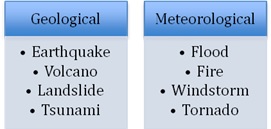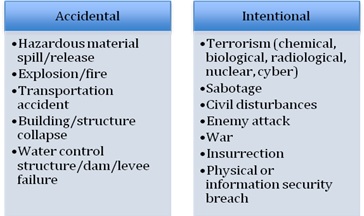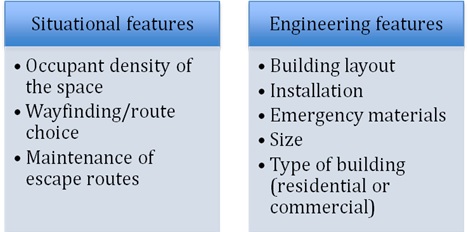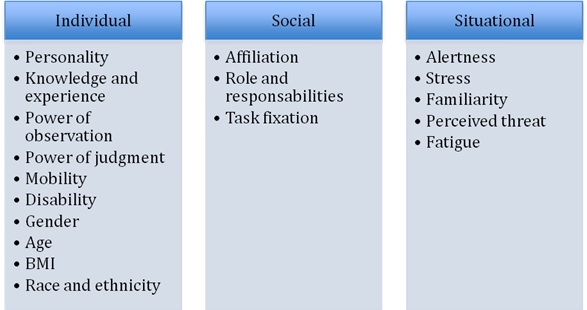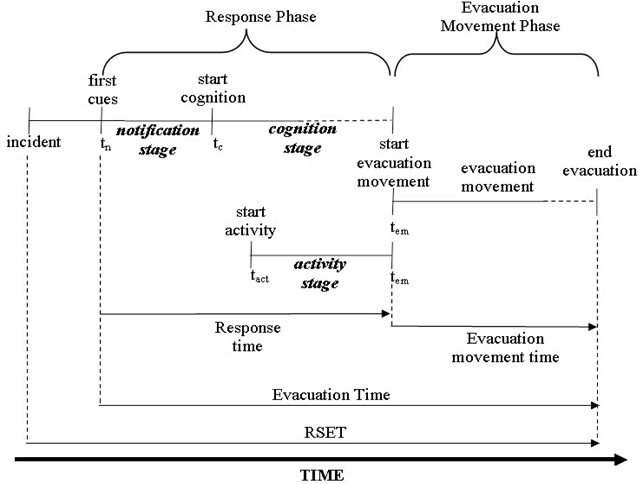Social Factors: Human crowd in evacuation
SOCIAL FACTORS IN EVACUATION: HUMAN CROWD IN EVACUATION
In most of the cases, evacuation process has a social aspect too. Indeed, emergency situations usually involve more than one person: people working in the same office, a family living in its house, a city or even a whole region facing a flood or an earthquake. “Evacuation is rarely an individual process. Even in single-person households, the first response to the initial evacuation warning is to seek further information on the validity of the threat or to consult with a friend, co-worker, neighbor, family member, or relative. Evacuations usually take place in a group context (Drabek & Stephenson, 1971)” (Sorensen & Sorensen, 2006, p. 185).
This chapter will offer a literature review about social factors in evacuation, focusing on human crowd in evacuation and the “mass panic” approach, then talking about the relevance of leadership in this kind of situation and concluding with some information regarding communication in evacuation.
Human crowd in evacuation
In its first decades, psychological research about crowd movements in emergencies has focused on the “mass panic” approach (Le Bon, 1895). From this point of view, crowd is seen as an irrational group of individuals driven by instinct of personal survival. Social bounds dissolve and panic and confusion arise (Strauss, 1944) resulting in competitive behavior with people attending to their own needs. Fear cancels social and cultural constrains in favor of the short-term personal interest, which is evacuate as quicker as possible. Quarantelli (1954) have pointed out some conditions that would lead to mass panic: the perception of an immediate major physical danger, the feeling of possible entrapment and the perception collective powerlessness, and a feeling of individual isolation in a crisis situation. In this condition, moreover, the level of attention is reduced and people start to conform to other individuals because of social contagion (Helbing & Johansson, 2010). “This herding behavior is in some sense irrational, as it often leads to bad overall results like dangerous overcrowding and slower escape. In this way, herding behavior can increase the fatalities or, more generally, the damage in the crisis faced” (Helbing & Johansson, 2010, p. 14). Nevertheless, in some conditions this herding behavior, which can be explained as a stronger tendency of follow other people under stress, can be useful, for example in unfamiliar environments or in case of smoke caused by a fire. In such scenarios evacuees may be more likely to obtain information on exit routes by watching or following others (Bode & Codling, 2013). According to Helbing and Johansson (2010), “optimal chances of survival are expected for a certain mixture of individualistic and herding behavior, were individualism allow some people to detect the exit and the herding guarantees that successful solutions are imitated by small group of others” (p. 17).
Laboratory experiments and real past emergency situations have shown that “mass panic” approach doesn’t really explain people’s behaviors in emergencies, because antisocial and selfish behaviors are rare and people continue to be social actors embedded in social organizations (Drury, Cocking & Reicher, 2008). For example in an analysis conducted by Gershon and colleagues (2007) on the WTC 9/11 evacuation participants described a sense of social cohesion creating a protective atmosphere in the groups that were leaving the towers.
So, other approaches have been developed in the last decades and nowadays coexist in explaining crowd behaviors. Some of them are:
-
- the normative approach, which postulates that social roles, norms and rules of conducts that people use in everyday life remain the same even in emergency situations (Johnson, 1987);
-
- the affiliation model, which affirms that people are more motivated in seeking for their familiars and even to stay with them more than simply exit (Mawson, 2005). In particular, “the typical response of threat and disasters is not to flee but to seek the proximity of familiar persons and places; moreover separation from attachment figures is a greater stress factor than physical danger” (Mawson, 2005, p.101);
-
- the self-categorization theory (Turner, 1982) that explains also the mutual aid amongst strangers and the solidarity thanks to the identification of some aspects of oneself with the other (Drury, Cocking & Reicher, 2008). “The shared fate could create a sense of ‘we-ness’ among those who are similarly threatened according to which social bonds are created and strengthened” (Girod, 2012, p. 6). It is interesting to underline that this social bond is so hard to resist also after that the threat has gone.
The assumption of evacuee as actors acting rationally and normatively has important implications and some of the aspects of human behavior in evacuation that we mentioned above have repercussion if it is a crowd who has to evacuate. One of this is the decision about the exit to use. Lots of studies have pointed out that people in evacuation use the exit they usually came in because it is the most familiar (Benthorn & Frantzich, 1996; Johnson 2005; Proulx 2001). In case of huge groups of people this can lead to potentially dangerous collective phenomena at high pedestrian densities. Indeed, the sheer press of people eliminates the possibility to change route or to determine individual’s movements in the space (Aguirre, 2005). Overcrowding in preferred routes may result in injuries or fatalities among the evacuees. Recently, Bode and Codling (2013) have found an opposite result regarding exit choice in evacuation. Indeed, their study, based on a simulated evacuation in a virtual environment, shows that people normally don’t have a preference on the familiar route, but look for the emergency exit. The only experimental condition in which the preference for the familiar route is confirmed is the “motivational” one. In this case time pressure was put the to participants by a motivational message inviting them to beat the current fastest time to reach the new target during the countdown. Only in this condition of stress and time pressure they were more likely to choose the more familiar route, even if it was the most crowded one.
Analyzing crowd behavior in evacuation, Aguirre (2005) have highlighted some interesting group characteristics that play a relevant role. First of all the size: the bigger the group, the more difficult and longer it will be for the group todecide how to response to the danger. Group composition and heterogeneity is connected to size. The bigger the group, the more heterogeneous it could be. Variation, differences of opinions and relevant experience about what to do will result in longer time to decide what to do (Aguirre, 2005). This result is in contrast with the critical mass theory (Marwell & Oliber, 1993), which states that bigger groups have a higher probability of having a critical mass of members able to solve the situation. For this reason research is needed to understand how group heterogeneity impacts the decision to evacuate and evacuation behavior. Groups vary not only in terms of size and heterogeneity, but also in terms on amount of resources available. Aguirre (2005) states that: the greater the amount of resources available to the groups, the slower will be their adoption of evacuation behavior, for it will take more time for the groups to agree on how to use these resources and integrate them into their new division of labor.
© – MANAGEMENT OF AN EMERGENCY EVACUATION: A LEADER’S PERSPECTIVE – Sara Colangeli

